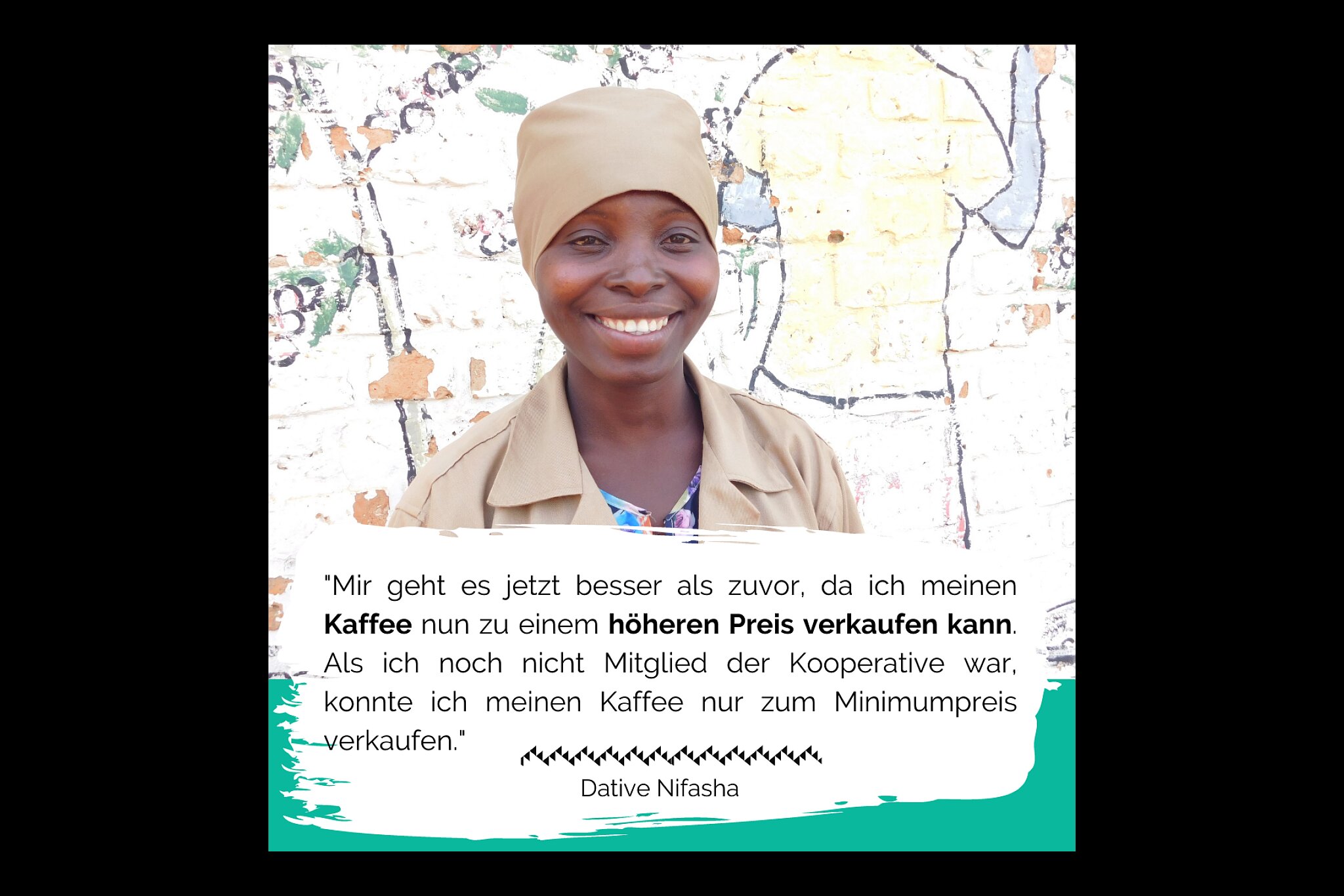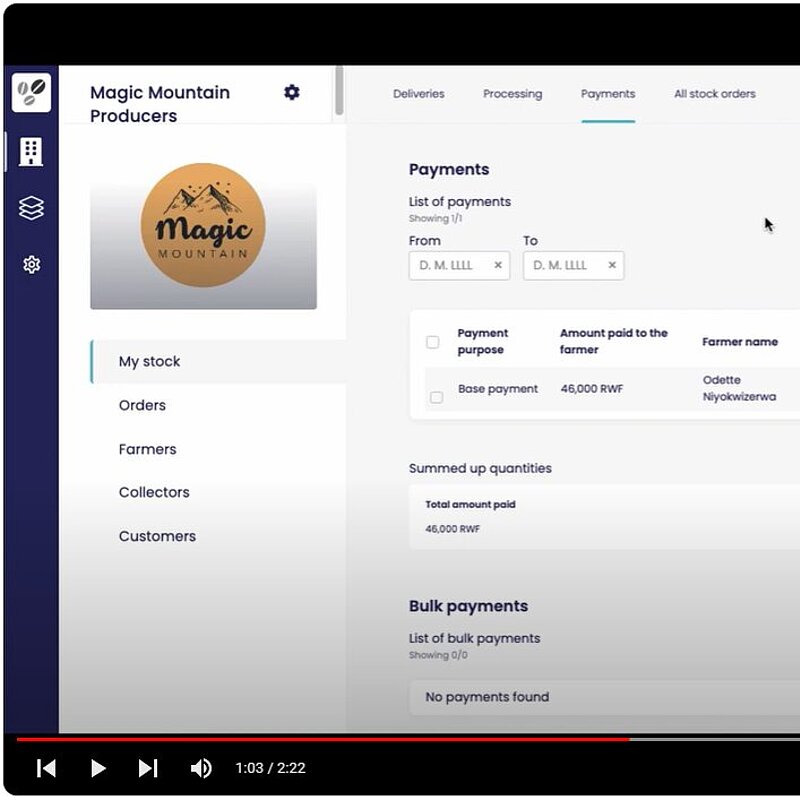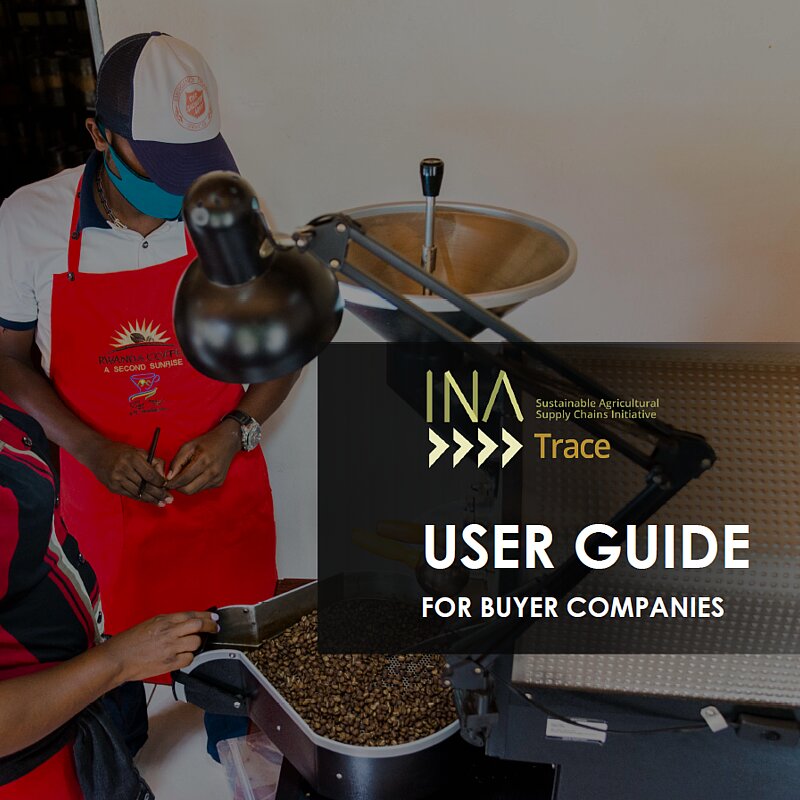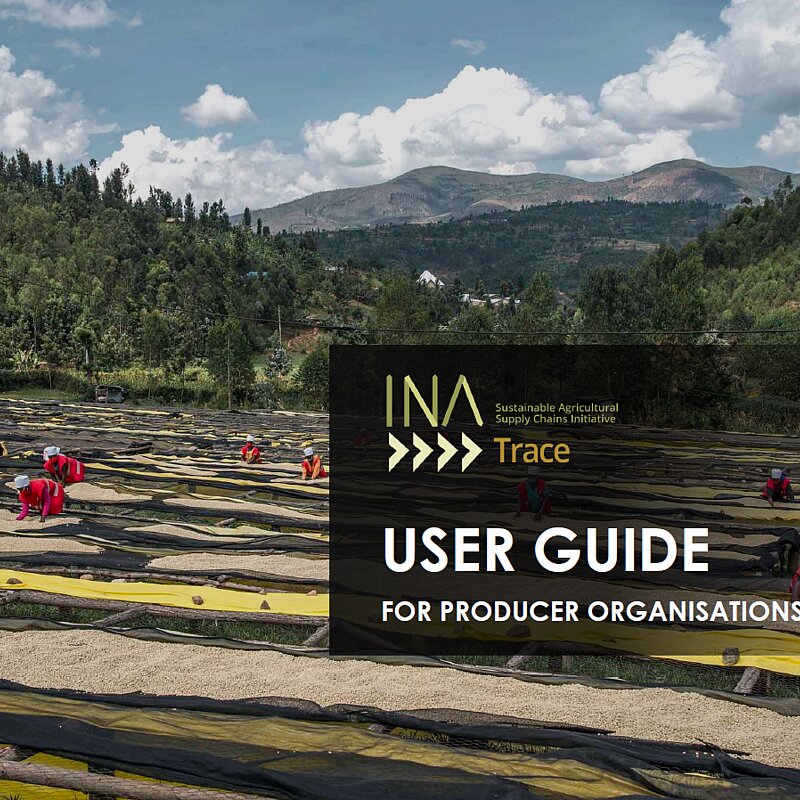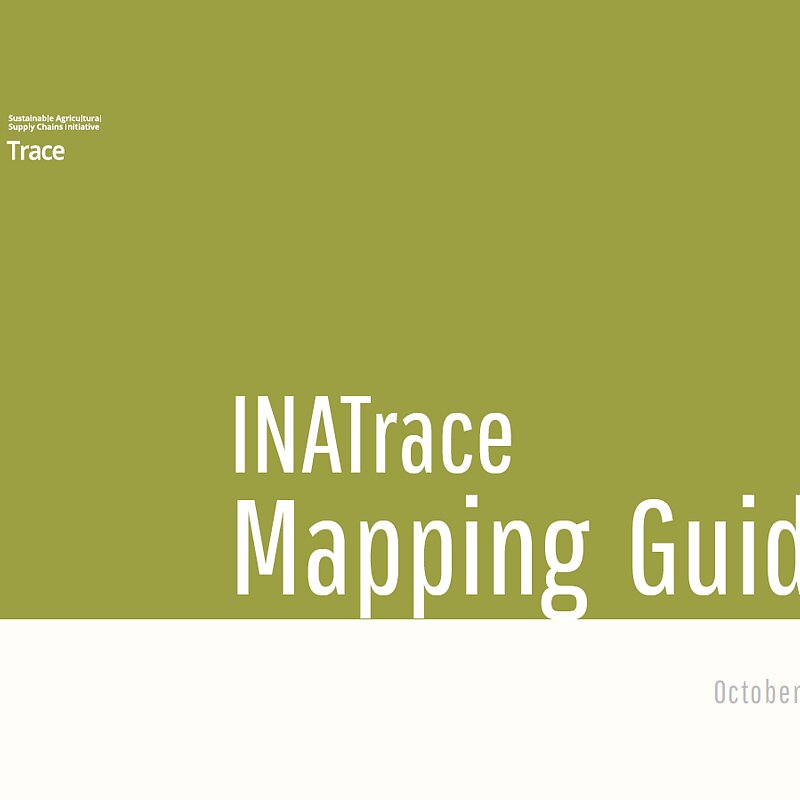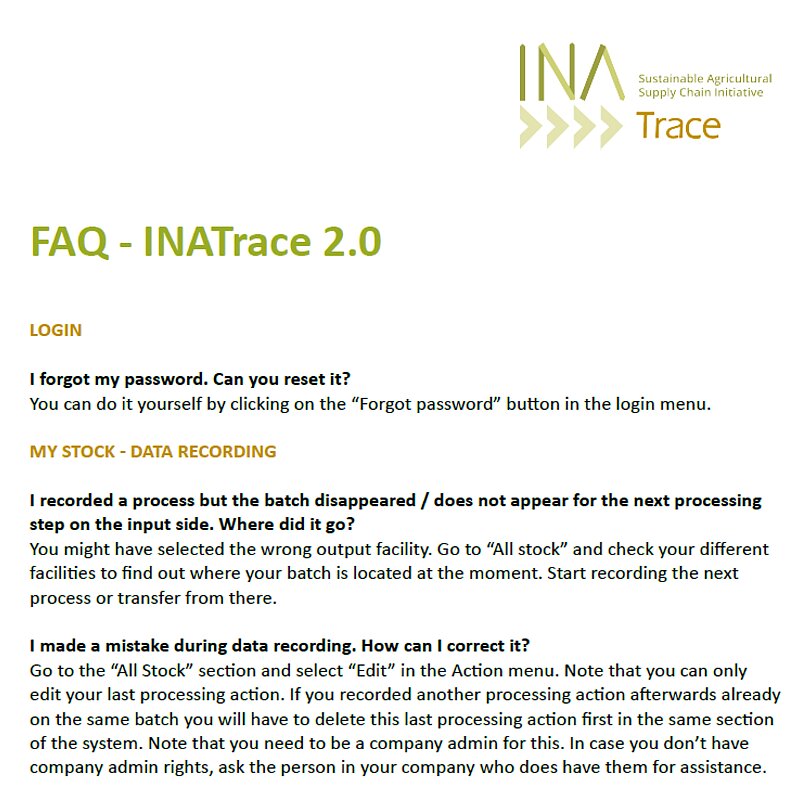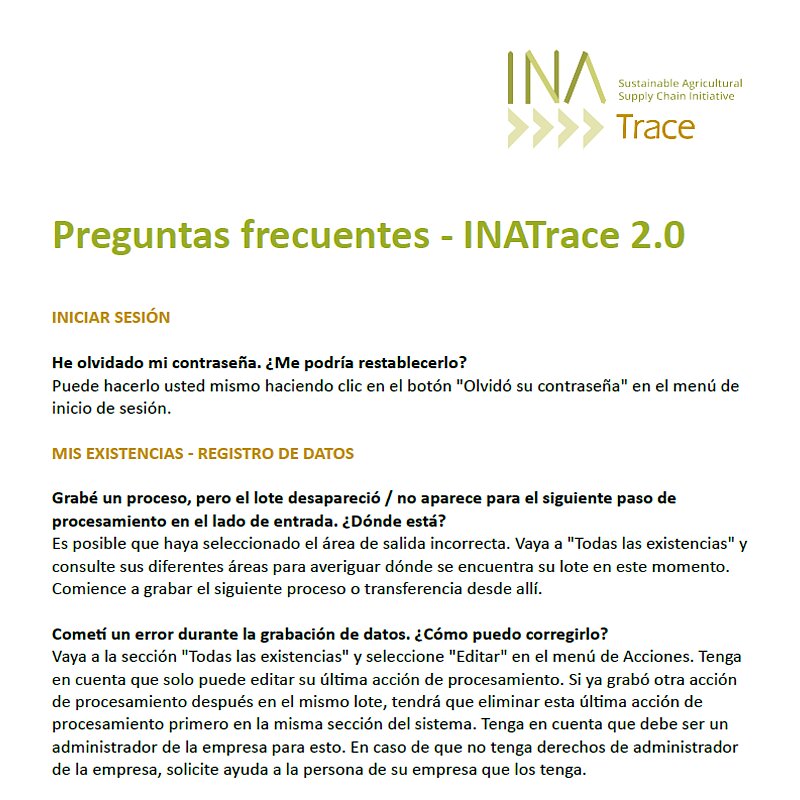Improving Transparency for Agricultural Supply Chains with INATrace
INATrace is a digital open-source solution that puts people first. With the aim of improving the economic situation of smallholder farmers, INATrace focuses on the traceability of global supply chains. Better payment for producers at the beginning of the supply chain can only be secured if it becomes clear how little they receive for the raw material produced compared to other actors.
Data on the supply chain, such as what prices are paid, which processing steps take place and which actors are involved, is stored digitally and, if desired, can also be viewed by consumers via a QR code. In addition, new functions for recording farmers' field polygons and satellite-based forest monitoring are being developed. Thus, the data collected in INATrace can be used to fulfil the due diligence requirements for the new EU Deforestation Regulation (EUDR).
The valuable experiences from our pilot projects in Rwanda and Honduras show that INATrace can already be used flexibly – even beyond coffee supply chains. In Rwanda, for example, we are running a pilot project on traceable macadamia nuts. The open-source code also makes it possible to uniquely customise INATrace. In Costa Rica, the code is being further developed for the pineapple supply chain.
New laws demand transparency in supply chains
Companies in the processing, wholesale and retail sectors are being made responsible for their own supply chains with the introduction of the German Supply Chain Act (LkSG) and the EU Regulation on Deforestation-Free Products (EUDR). Compliance with human rights and the protection of forests is indispensable, especially at the beginning of global supply chains. In the market for traceability solutions, which currently is very fragmented, INATrace consistently builds on the requirements of those at the beginning of supply chains.
With INATrace, cooperatives have the opportunity to say goodbye to paper or Excel-based systems and make their processes fully transparent and digital. They also retain ownership over their data, strengthening their negotiating position vis-à-vis buyers of their products.
INATrace as an open-source project
From spring 2024, the "INATrace Toolbox" will be available. This toolbox includes not only the latest version of the code, but also comprehensive documentation, user manuals and training videos. For INATrace is not merely a solution for transparent supply chains but is also an open-source community project. We invite companies, organisations, projects and donors to actively participate in the use and further development of INATrace. Our goal is to build an engaged community that creates value for people who grow commodities like coffee, cocoa, rubber or palm oil.
The INATrace code is freely accessible via GitHub and is available for further development.
INATrace in use
INATrace is currently operational in Rwanda, Honduras and the Dominican Republic and is actively used by coffee cooperatives. In addition, as mentioned above, we have started a pilot project in Rwanda for the traceability of macadamia nuts. We are also working on an adaptation of the INATrace software for fresh pineapples in Costa Rica. More information on these projects can be found on the website presenting the success story in Rwanda and on the official INATrace website for Honduras.
INATrace, how does it work? Take a look at the INATrace training videos if you would like to learn more about the functionalities of the tool:
If you would like to become part of the open-source community, please get in touch with us. We are happy to help and look forward to seeing the community grow.

